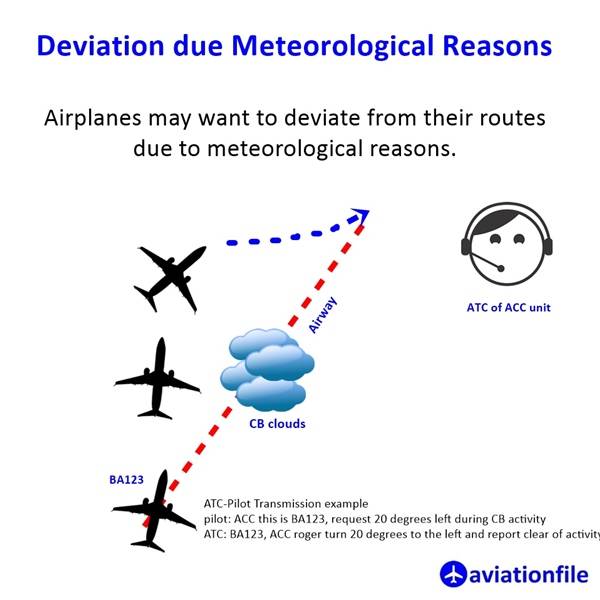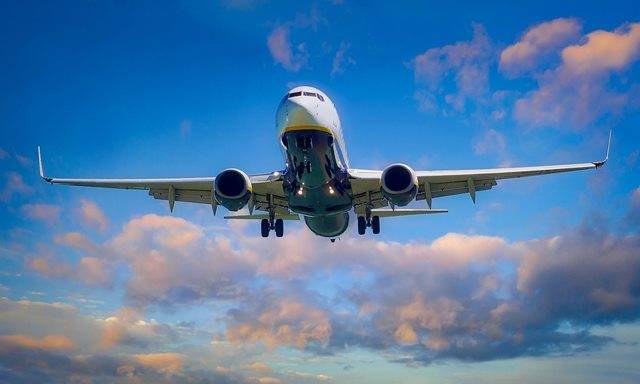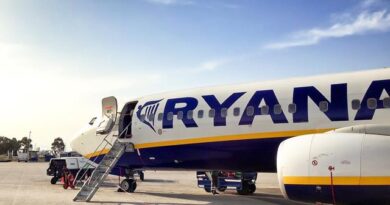Meteorological Activity: A Major Cause of Flight Delays and Deviations
Ever wondered why your flight is delayed or takes a detour? Often, the culprit is none other than meteorological activity. For example, the effect of rain on air traffic or icing… Let’s take a closer look.
How Weather Disrupts Flights
- Heavy Rain and Low Visibility: Intense rainfall can significantly reduce visibility, making landing and takeoff hazardous. This can lead to delays or even cancellations, diversions for safety reasons.
- Thunderstorms and Turbulence: Turbulent air caused by thunderstorms can be dangerous for both aircraft and passengers. Flights may be delayed or rerouted to avoid these stormy patches.
- Icing Conditions: When freezing temperatures and moisture combine, ice can accumulate on the wings and other critical parts of the aircraft. This added weight can affect the aircraft’s performance and handling, leading to delays or cancellations. In addition, the aircraft on the ground may need to perform deicing, which means additional time and delay.
Effect of Rain on Air Traffic
Rain can have a significant impact on air traffic, both in terms of safety and efficiency. Heavy rain can reduce visibility, making it difficult for pilots to see the runway and other aircraft. It can also create turbulence, which can make flying uncomfortable and dangerous.
In addition, rain can make it difficult for aircraft to generate enough lift to take off and land. This is because water droplets on the wings can reduce the amount of air that flows over them. In severe cases, this can lead to an aircraft losing lift and crashing.
For these reasons, air traffic controllers often impose delays or even cancel flights during heavy rain. This can be a major inconvenience for passengers, but it is necessary to ensure the safety of all involved.

Deviation on Air Due to Meteorological Activity
Meteorological activity, such as rain, thunderstorms, and icing, can also cause aircraft to deviate from their planned flight path. This is done to avoid dangerous weather conditions and to ensure the safety of the aircraft and its passengers.
For example, an aircraft flying through a thunderstorm may need to deviate from its course to avoid lightning strikes and heavy turbulence. An aircraft flying through a cloud of icing may also need to deviate to avoid ice accumulating on its wings, which could reduce lift and make the aircraft difficult to control.
Air traffic controllers work closely with pilots to plan and manage these deviations. They use weather radar and other tools to track weather conditions and to help pilots choose the safest route.

Impact on Passengers
The impact of rain and other meteorological activity on air traffic can be significant for passengers. Flight delays and cancellations can be frustrating and inconvenient. In some cases, passengers may need to be rerouted to a different airport, which can add even more time to their journey.
In addition, passengers may experience turbulence and other uncomfortable conditions during flights through bad weather. However, it is important to remember that air traffic controllers and pilots are taking all necessary steps to ensure the safety of all passengers.
Keeping You Safe, Even When It Delays You
While delays and detours can be frustrating, it’s important to remember that they prioritize passenger safety. Airlines and air traffic control prioritize safety above all else, and sometimes, navigating adverse weather conditions requires adjustments to flight plans.
Conclusion
Rain and other meteorological activity can have a significant impact on air traffic. However, air traffic controllers and pilots are trained and equipped to deal with these challenges. By working together, they can ensure the safety of all passengers, even during bad weather.
References:
- Federal Aviation Administration (FAA). Airman’s Information Manual (AIM).
- “Meteorological Impacts on Commercial Aviation Delays and Cancellations in the Continental United States” by AMS Journals: https://journals.ametsoc.org/view/journals/apme/58/3/jamc-d-17-0277.1.xml
- World Meteorological Organization (WMO). Manual on Aviation Meteorological Practice. No. 889.
- International Air Transport Association (IATA). Safety Information Bulletin on the Impact of Adverse Weather on Air Transport Operations.
- National Transportation Safety Board (NTSB). Aviation Accident Reports.
- American Meteorological Society (AMS). Glossary of Meteorology.



